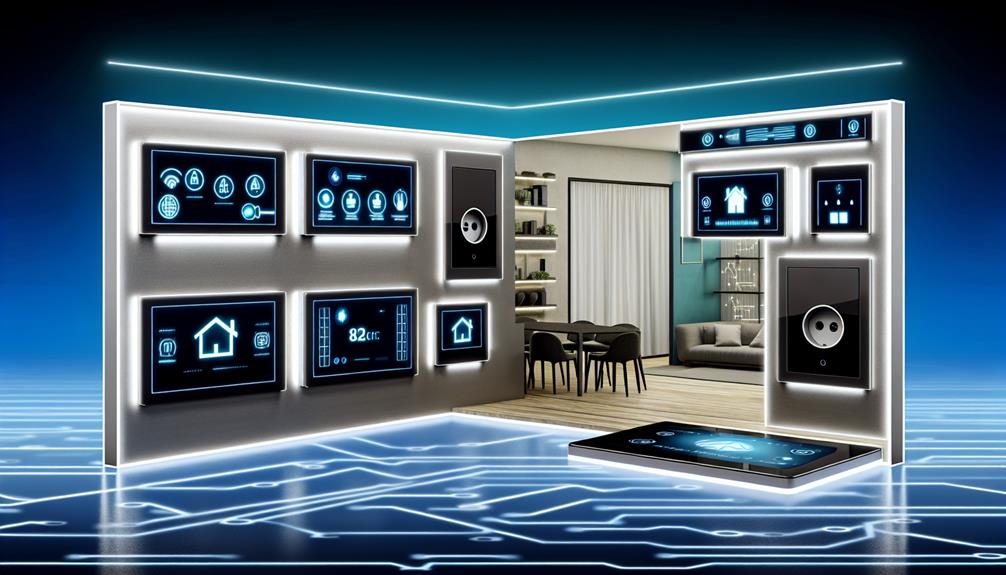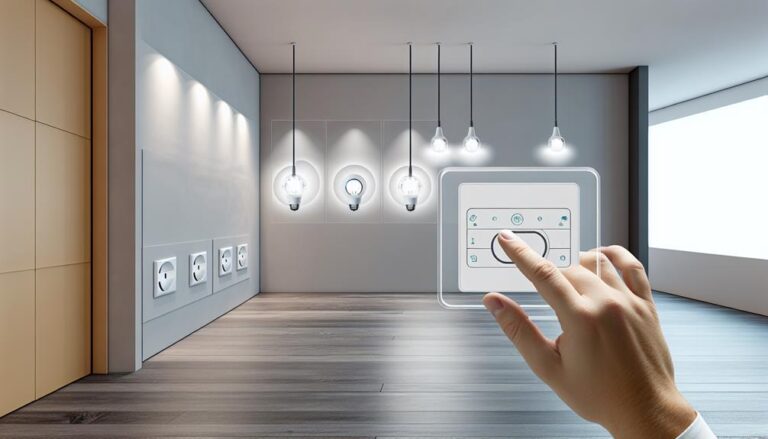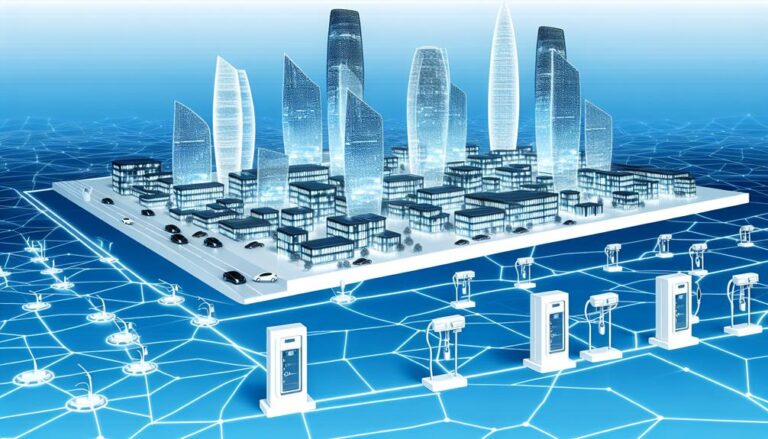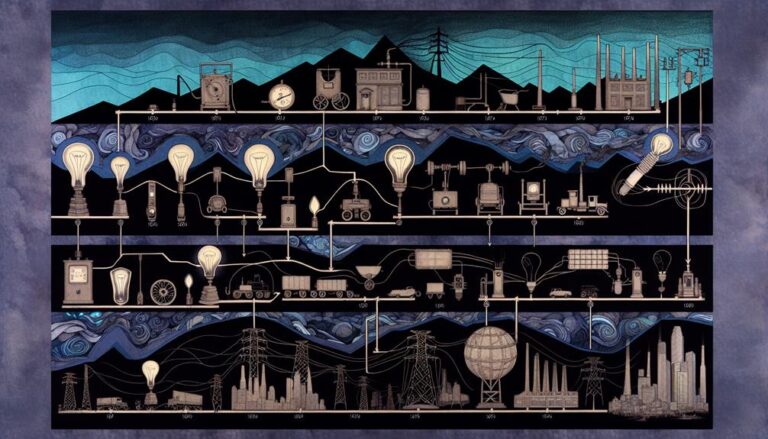Innovations in Electrical Services: What’s New in 2024
Picture this: you’re sitting in your living room, basking in the glow of energy-efficient LED lights, while your smart home automation system seamlessly adjusts the temperature and activates your favorite playlist.
But what if I told you that these innovations are just the tip of the iceberg? The world of electrical services is constantly evolving, and in [Current Year], there are even more groundbreaking advancements on the horizon.
From electric vehicle charging infrastructure to battery storage technologies, and the integration of renewable energy sources, the future of electrical services promises to be both exciting and transformative.
But what exactly are these new innovations, and how will they impact our daily lives? Stay tuned as we explore the cutting-edge developments in electrical services that will shape the world we live in.
Key Takeaways
- Smart home automation and energy-efficient lighting solutions revolutionize control and management of electrical systems, offering seamless control from anywhere using smartphones or tablets.
- Electric vehicle charging infrastructure optimizes the home’s electrical system for efficient charging, integrating renewable energy sources to reduce reliance on the grid and provide fast-charging solutions.
- Battery storage technologies, such as lithium-ion, flow, sodium-ion, and solid-state batteries, play a crucial role in optimizing and enhancing electrical systems, providing high energy density, long cycle life, scalability, and enhanced safety.
- Integration of renewable energy sources like solar and wind power is important for optimizing and enhancing electrical systems with clean and sustainable energy, reducing greenhouse gas emissions, diversifying energy sources, and improving grid resilience and management.
Smart Home Automation
Smart Home Automation revolutionizes the way you control and manage various electrical systems and devices in your home. With the advancement of technology, you can now have complete control over your home’s lighting, heating, cooling, security, and entertainment systems. Imagine being able to turn on your lights, adjust the temperature, lock your doors, and play music, all with the touch of a button or a simple voice command.
Smart Home Automation uses a combination of sensors, internet connectivity, and intelligent software to create a seamless and efficient system. It allows you to monitor and control your home from anywhere, using your smartphone or tablet. This means that even when you’re not at home, you can still have peace of mind knowing that your home is secure and energy-efficient.
One of the key benefits of Smart Home Automation is the freedom it provides. You have the freedom to customize and personalize your home’s settings according to your preferences and needs. For example, you can set up automated schedules for your lights and thermostats, so they adjust automatically based on your daily routine. This not only saves energy but also makes your life more convenient.
Energy-Efficient Lighting Solutions
Energy-efficient lighting solutions play a crucial role in reducing energy consumption and optimizing the overall efficiency of your home’s electrical system. By upgrading to energy-efficient lighting, you can significantly decrease your energy bills while also contributing to a greener and more sustainable environment. There are various innovative lighting technologies available in the market that offer both energy efficiency and improved lighting quality.
One such technology is LED (Light Emitting Diode) lighting. LEDs are highly energy-efficient as they convert a large percentage of electrical energy into light, minimizing wastage. They also have a longer lifespan compared to traditional incandescent bulbs, reducing the frequency of replacements and saving you money in the long run. Moreover, LEDs provide directional light, allowing for better illumination and reducing the need for additional fixtures.
To further illustrate the benefits of energy-efficient lighting, consider the following table:
| Lighting Solution | Energy Efficiency | Lifespan |
|---|---|---|
| LED Lighting | High | Long |
| Compact Fluorescent | Moderate | Moderate |
| Incandescent | Low | Short |
As you can see, LED lighting offers the highest energy efficiency and longest lifespan compared to other lighting solutions. By choosing energy-efficient lighting options, you can enjoy enhanced illumination while minimizing your carbon footprint and saving money on your electricity bills.
Electric Vehicle Charging Infrastructure
When it comes to optimizing your home’s electrical system, another important aspect to consider is the installation of an efficient and reliable electric vehicle charging infrastructure. As more people switch to electric vehicles, having a dependable charging system at home becomes crucial. An efficient EV charging infrastructure allows you to conveniently and quickly charge your electric vehicle, ensuring you have enough power for your daily commute or any other travel needs.
One of the key innovations in electric vehicle charging infrastructure is the introduction of smart charging solutions. These systems use advanced technology to optimize charging based on factors such as electricity demand, time of use pricing, and grid stability. With smart charging, you can schedule your charging sessions during off-peak hours when electricity rates are lower, saving you money in the long run.
Another important development in EV charging infrastructure is the integration of renewable energy sources. By combining solar panels or wind turbines with your charging system, you can reduce your reliance on the grid and make your charging process more sustainable. This not only benefits the environment but also provides you with the freedom to power your vehicle using clean energy.
Furthermore, advancements in battery technology have led to the development of fast-charging solutions. These systems can rapidly charge your electric vehicle, significantly reducing charging time compared to traditional methods. Fast-charging infrastructure is becoming more widely available, allowing you to quickly charge your vehicle on the go.
Battery Storage Technologies
Battery storage technologies play a crucial role in optimizing and enhancing the efficiency of electrical systems. With the increasing demand for renewable energy sources and the need to balance intermittent power generation, battery storage solutions offer a reliable and flexible way to store excess electricity and deliver it when needed. These technologies enable the integration of renewable energy sources into the grid, reducing reliance on fossil fuels and lowering greenhouse gas emissions.
To understand the advancements in battery storage technologies, let’s take a look at the following table:
| Technology | Advantages |
|---|---|
| Lithium-ion | High energy density, long cycle life |
| Flow batteries | Scalable capacity, long-duration storage |
| Sodium-ion | Low-cost materials, high energy density |
| Solid-state | Enhanced safety, longer lifespan |
Lithium-ion batteries are widely used due to their high energy density and long cycle life. Flow batteries, on the other hand, offer scalable capacity and long-duration storage capabilities, making them suitable for grid-scale applications. Sodium-ion batteries are gaining attention for their low-cost materials and high energy density. Solid-state batteries, with their enhanced safety features and longer lifespan, show promise for future energy storage applications.
As battery storage technologies continue to evolve and improve, they will play an essential role in facilitating the transition to a more sustainable and efficient electrical system. These innovations empower individuals and communities to have greater control over their energy usage and contribute to a cleaner and greener future.
Integration of Renewable Energy Sources
To further optimize and enhance the efficiency of electrical systems, it’s imperative to explore the seamless integration of renewable energy sources. The integration of renewable energy sources into existing electrical systems has become increasingly important due to the rising demand for clean and sustainable energy solutions. Renewable energy sources, such as solar and wind power, offer a viable alternative to traditional fossil fuel-based electricity generation.
Integrating renewable energy sources involves connecting them to the existing electrical grid in a way that allows for the efficient and effective distribution of power. This integration requires careful planning and coordination to ensure the stability and reliability of the electrical system. Advanced technologies, such as smart grids and advanced metering infrastructure, play a crucial role in enabling the seamless integration of renewable energy sources.
One of the key benefits of integrating renewable energy sources is the reduction of greenhouse gas emissions. By replacing fossil fuel-based electricity generation with renewable energy sources, we can significantly reduce our carbon footprint and mitigate the impacts of climate change. Additionally, renewable energy sources provide a more sustainable and reliable source of electricity, as they aren’t subject to price volatility and supply constraints associated with fossil fuels.







